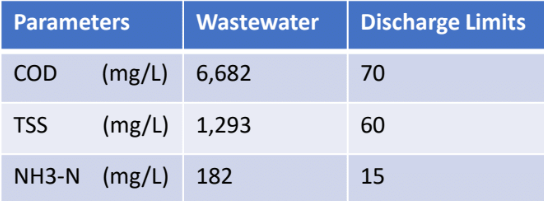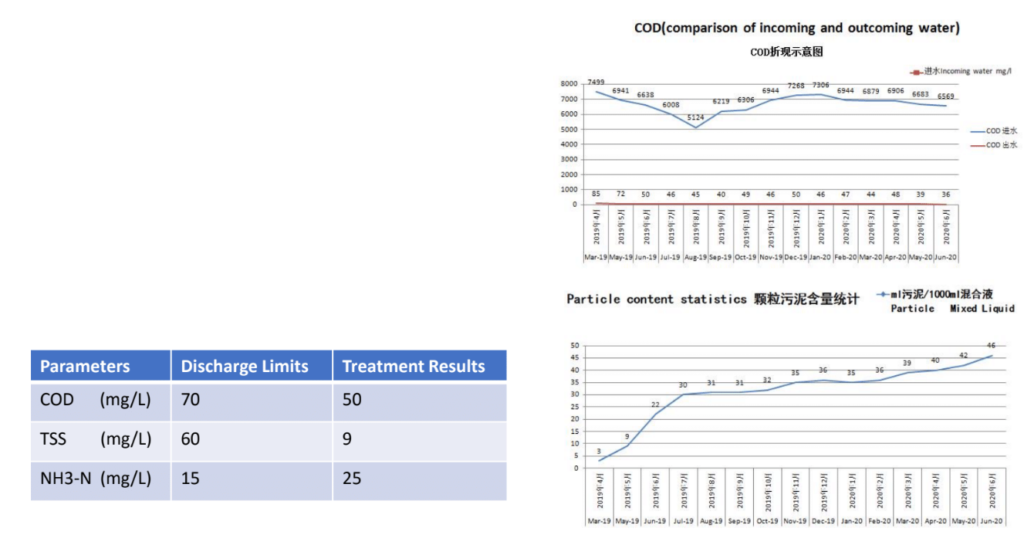The processing of soybean to produce meal protein is a very water-intensive process, with 7-10 m3 of water produced for every 1000 kg of soybean processed. The main treatment process is based on alkali extraction. In this process,the beans are treated with sodium hydroxide to solubalize the protein,followed by pH-adjustment with hydrochloric acid to separate the protein component from solution. This process and its ancillary operations generate an effluent that contains significant residual organic as well as inorganic substances. The chemical oxygen demand from this waste water can vary between 3624 mg/L and 8565 mg/L, with total suspended solids in the order of 2170mg/L.Pressure is building on processors to treat this effluents efficiently and cost-effectively. This chart shows the quality of the wastewater produced in this facility:


The novel design incorporates both reactors into a single compact unit, in the form of two concentric cylindrical vessels as shown in Fig 1. The internal vessel houses the UASB, while the external annular space comprises the ASR. This results in a very compact design with minimal footprint that can be easily deployed on-site. The UASB is further fitted with internal baffles that compartmentalize the UASB to simulate several reactors operating in-parallel, as well as providing for the internal recycling of granular sludge within the reactor to accelerate return of a fraction of the suspended granules to the bottom of the reactor (See Fig 1.)

No capital expense for the customer, which allows faster decisions and implementation.
© 2022 All Right Reserved. Designed By AKNY Media.